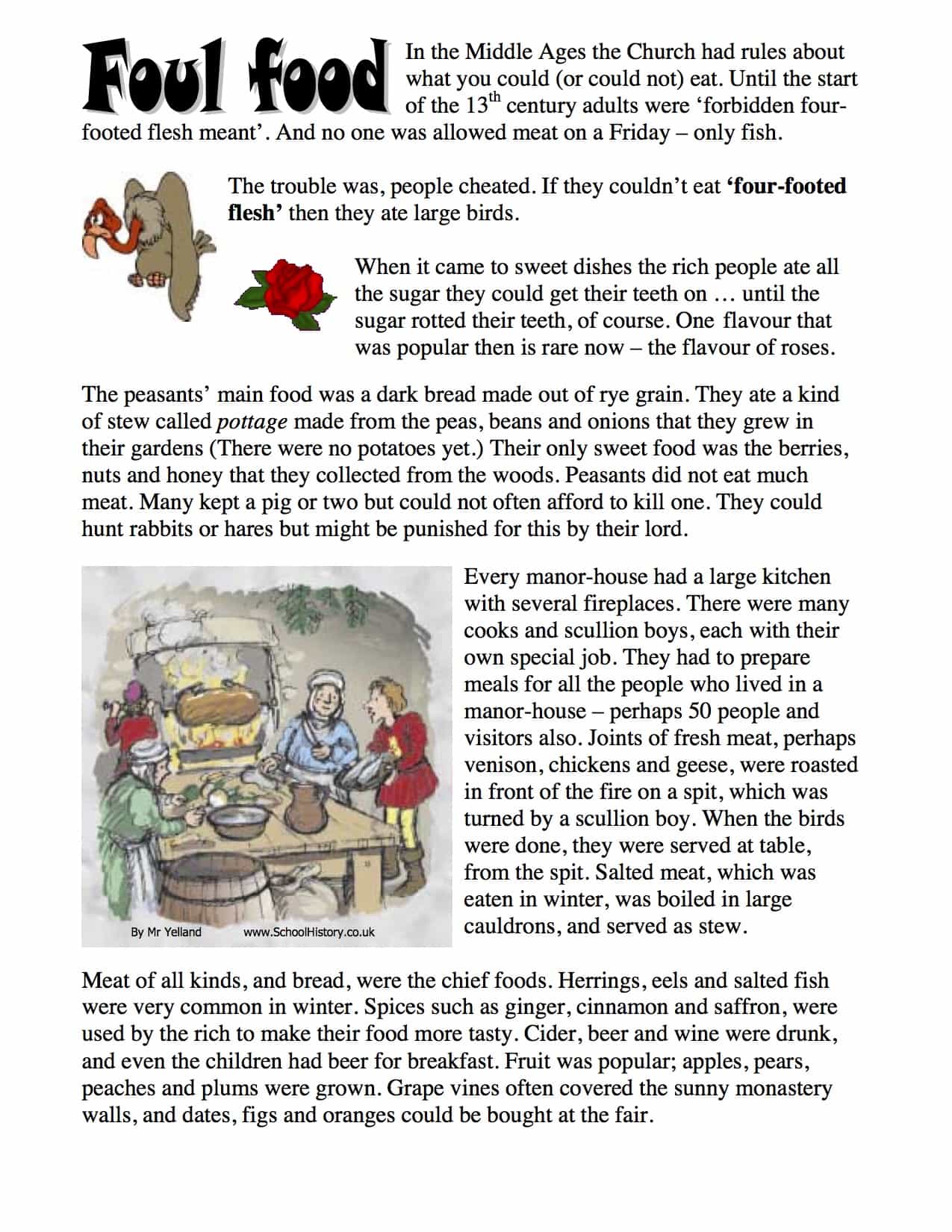Download Foul Food in the Middle Ages
Click the button below to download this worksheet for use in the classroom or at home.
Download →
In the Middle Ages the Church had rules about what you could (or could not) eat. Until the start of the 13th century adults were ‘forbidden four-footed flesh meant’. And no one was allowed meat on a Friday – only fish. The trouble was, people cheated. If they couldn’t eat ‘four-footed flesh’ then they ate large birds.
When it came to sweet dishes the rich people ate all the sugar they could get their teeth on … until the sugar rotted their teeth, of course. One flavour that was popular then is rare now – the flavour of roses.
The peasants’ main food was a dark bread made out of rye grain. They ate a kind of stew called pottage made from the peas, beans and onions that they grew in their gardens (There were no potatoes yet.) Their only sweet food was the berries, nuts and honey that they collected from the woods. Peasants did not eat much meat. Many kept a pig or two but could not often afford to kill one. They could hunt rabbits or hares but might be punished for this by their lord.
Every manor-house had a large kitchen with several fireplaces. There were many cooks and scullion boys, each with their own special job. They had to prepare meals for all the people who lived in a manor-house – perhaps 50 people and visitors also. Joints of fresh meat, perhaps venison, chickens and geese, were roasted in front of the fire on a spit, which was turned by a scullion boy. When the birds were done, they were served at table, from the spit. Salted meat, which was eaten in winter, was boiled in large cauldrons, and served as stew.
Meat of all kinds, and bread, were the chief foods. Herrings, eels and salted fish were very common in winter. Spices such as ginger, cinnamon and saffron, were used by the rich to make their food more tasty. Cider, beer and wine were drunk, and even the children had beer for breakfast. Fruit was popular; apples, pears, peaches and plums were grown. Grape vines often covered the sunny monastery walls, and dates, figs and oranges could be bought at the fair.
Facts PDF Worksheet:
-
- Aimed at Students studying at UK Year 8/9 or equivalent
- Free to download
- Use as you wish in the classroom or home environment
- Structured study guide and challenging tasks.
